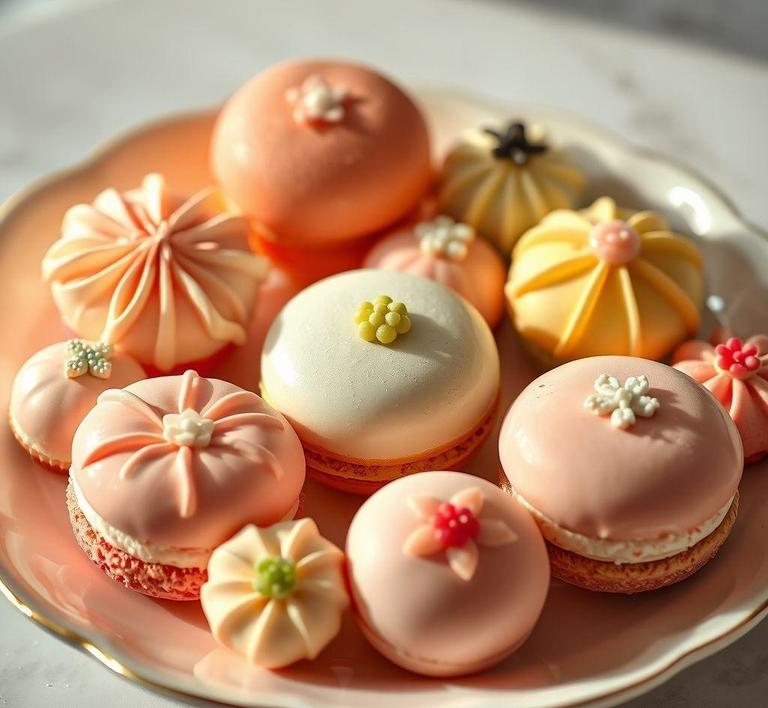If you’re someone who loves pasteles but ends up with leftovers after a big holiday feast, you might be wondering whether you can safely refreeze them for later enjoyment. The answer is yes, but there are some important tips to ensure they stay as fresh and delicious as when they were first made. Refreezing pasteles requires a little care in how you wrap and store them, as well as knowing when it’s safe to do so. This guide will walk you through the best methods to refreeze pasteles without compromising their taste or texture, so you can enjoy that savory goodness long after the party’s over.
Can You Refreeze Pasteles?

Yes, you can refreeze pasteles-but it comes with conditions. Pasteles, a traditional Puerto Rican dish made from a masa (dough) of green bananas, yautía (a type of root vegetable), and often other starchy components like pumpkin or plantain, are typically filled with savory ingredients such as seasoned pork or chicken, then wrapped in banana leaves and boiled or steamed. Because they are time-intensive to make, people often prepare them in large batches and freeze them for future enjoyment.
The question of whether they can be refrozen often arises when someone defrosts a portion of a large batch and doesn’t use it all. As with many foods, safety and quality are paramount. The key consideration here is how the pasteles were handled during the thawing process. If they were thawed safely-meaning under refrigeration and not left out at room temperature for extended periods-then refreezing is generally safe from a food safety standpoint.
However, there is an important distinction: if the pasteles were fully cooked before being thawed, refreezing them may be less risky than refreezing uncooked ones, as the cooking process eliminates much of the microbial risk. On the other hand, if the pasteles were uncooked and then thawed, refreezing them could increase the risk of bacterial growth if they were not kept at the correct temperature throughout.
How To Refreeze Pasteles?
If you’re intent on refreezing pasteles-either cooked or uncooked-doing so correctly is crucial to preserve both safety and quality. Here’s a step-by-step guide:
-
Ensure Proper Thawing:
Only refreeze pasteles that were thawed in the refrigerator. Avoid refreezing those thawed at room temperature, in warm water, or in the microwave, as these methods can introduce bacteria or encourage bacterial growth.
-
Evaluate the Condition:
Check that the pasteles still look, smell, and feel as they should. Any sour smell, slimy texture, or off-putting color is a red flag, and in such cases, they should be discarded instead of refrozen.
-
Cool Before Refreezing:
If the pasteles were cooked after thawing and you now want to refreeze them, make sure they’ve cooled completely to room temperature (but not left out more than 2 hours) before wrapping and freezing them again.
-
Rewrap Properly:
Moisture is the enemy of texture, and air is the enemy of flavor. Double-wrap pasteles in plastic wrap and then foil, or vacuum seal them if possible. Place them in airtight freezer bags or containers and label them with the date.
-
Freeze Quickly:
Use the ‘quick freeze’ setting if your freezer has one. Rapid freezing helps minimize ice crystal formation, which is a big culprit behind texture degradation in refrozen food.
Quality Impact
While refreezing pasteles is usually safe if done correctly, it’s essential to manage expectations when it comes to quality. Freezing causes water within the pasteles’ ingredients to expand, forming ice crystals. When thawed, these crystals melt and can break down the cell structure of the masa and fillings, making the texture softer or even slightly mushy. This effect is more pronounced with each cycle of freezing and thawing.
Uncooked pasteles, especially, suffer a bit more in terms of texture when refrozen, as their ingredients haven’t yet been bound together by the cooking process. Cooked pasteles tend to fare better upon refreezing, though they may still experience a slight loss in firmness and flavor depth.
The banana leaf wrapper can also become more fragile or brittle with multiple freezes, sometimes splitting or falling apart more easily when reheated. Flavor loss is generally minimal if storage is brief and proper wrapping is used, but prolonged exposure in the freezer can cause the spices and seasoning to dull slightly due to freezer burn or oxidation.
Refreezing pasteles is a viable option when approached with care and attention. While it’s best to portion pasteles before freezing to avoid needing to refreeze them at all, life doesn’t always go according to plan. If you find yourself with leftover thawed pasteles-whether cooked or uncooked-rest assured that refreezing is safe under the right conditions.
However, be prepared for subtle shifts in texture and potentially in flavor. Proper storage methods-airtight sealing, rapid freezing, and limited time in the freezer-can go a long way toward preserving their deliciousness.
At the heart of it, pasteles are more than just food-they’re tradition, family, and celebration wrapped in a banana leaf. Handle them with care, and even a refrozen pastel can bring a bite of home to your table.
Is It Safe To Refreeze Pasteles?
The short answer: yes, it can be safe to refreeze pasteles-but only under certain conditions. Like all perishable food items, pasteles are susceptible to bacterial growth if not handled and stored properly. These banana-leaf-wrapped bundles of grated root vegetables, meat fillings, and spices are delicate in texture and rich in moisture, making them particularly vulnerable to spoilage.
If pasteles were thawed in the refrigerator and remained at or below 40°F (4°C), you can safely refreeze them. However, if they were thawed at room temperature, partially cooked, or left out for more than two hours, refreezing becomes risky. Harmful bacteria such as Salmonella or Listeria can proliferate rapidly at warmer temperatures, and freezing does not kill these pathogens-it merely suspends their activity.
Furthermore, each freeze-thaw cycle slightly degrades the quality of the pastel’s masa (dough) and filling. The texture may become grainier, and the flavor may mellow. So while it might be safe, the culinary experience may not be quite as sublime after repeated freezing.
Signs That Pasteles Should Not Be Refrozen
To protect your health and taste buds alike, always inspect your pasteles before even considering refreezing. Here are clear warning signs that they should be discarded instead:
- Off-putting Odor: One of the first and most obvious signs of spoilage is a sour or rancid smell. Fresh pasteles should have a slightly earthy, savory aroma.
- Slimy or Sticky Texture: If the surface of the pastel feels unusually slimy or sticky (beyond the expected moistness from steam), this may indicate bacterial growth.
- Color Changes: Any noticeable discoloration in the masa or filling-such as grayish hues, dark spots, or mold-should be taken seriously.
- Bitter or “Off” Taste: If you’ve already reheated a pastel and notice a bitter or sour taste, it’s best not to refreeze or continue consuming it.
- Excessive Thaw Time: If the pasteles sat at room temperature for more than two hours or were thawed using warm water or a microwave, they should not be refrozen. These methods expose food to the temperature danger zone (40°F to 140°F), where bacteria thrive.
Common Refreezing Mistakes
Even well-intentioned cooks can make mistakes when trying to preserve their favorite dishes. Here are common errors to avoid:
- Refreezing After Improper Thawing: Thawing pasteles on the counter or in warm environments before refreezing introduces serious food safety hazards.
- Freezing Already Spoiled Pasteles: Freezing does not reverse spoilage. If something smells or looks “off”, tossing it is the safest course of action.
- Repeated Freeze-Thaw Cycles: Every time you thaw and refreeze, the moisture inside the pastel crystallizes, damaging the texture and flavor. Repeated cycles can turn the once-luscious masa rubbery and dry.
- Not Labeling Dates: Failing to mark dates on frozen pasteles makes it hard to track how long they’ve been stored. Pasteles can last about 6 months in the freezer if properly sealed and stored, but it’s best to consume them within 3 months for optimal taste and texture.
- Inadequate Packaging: Freezer burn is another threat. Wrapping pasteles loosely or using thin, unsealed bags exposes them to dry air, leading to leathery spots and a loss of moisture.
Tips And Tricks
To extend the life and quality of your pasteles and make the refreezing process safer and easier, follow these expert tips:
- Portion Wisely: Freeze pasteles in individual or meal-sized portions. This allows you to thaw only what you need, minimizing waste and exposure.
- Vacuum Seal or Double Wrap: Use airtight vacuum-sealed bags or double-wrap pasteles in plastic wrap followed by aluminum foil to prevent freezer burn and lock in flavor.
- Label Everything: Write the freezing date, thaw date (if applicable), and contents on each package. This small step keeps your freezer organized and prevents any guessing games.
- Cool Quickly Before Freezing: If you’re refreezing cooked pasteles, let them cool quickly in the refrigerator before freezing. Rapid cooling helps reduce bacterial growth and preserves quality.
- Reheat Thoroughly: When ready to eat, make sure to steam or boil pasteles until they reach an internal temperature of at least 165°F (74°C) to ensure safety.
Conclusion
Refreezing pasteles is a practical way to preserve this beloved dish for future enjoyment-but it comes with responsibilities. The key to doing so safely lies in proper handling from the moment you thaw them. Always thaw in the refrigerator, never leave them at room temperature for extended periods, and be diligent in checking for signs of spoilage before refreezing.
While you might sacrifice a touch of flavor or texture with each freeze-thaw cycle, with careful attention, you can still enjoy delicious, satisfying pasteles long after they were first prepared. In the end, it’s all about balancing food safety with culinary enjoyment-because nothing should stand between you and a plate of perfectly steamed pasteles.


